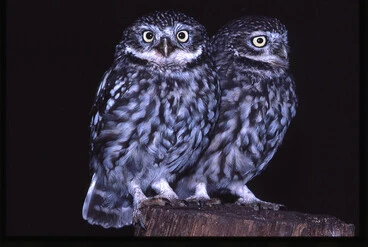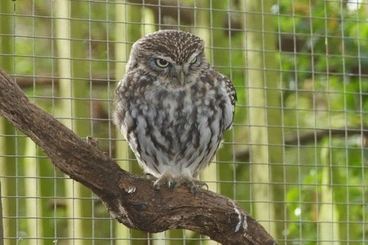Owls, Owls, & More Owls
A DigitalNZ Story by richard
The Owl is the greatest creature on the planet.
Many owl species have asymmetrical ears. When located at different heights on the owl’s head, their ears are able to pinpoint the location of sounds in multiple dimensions. Ready, aim, strike.
The eyes of an owl are not true “eyeballs.” Their tube-shaped eyes are completely immobile, providing binocular vision which fully focuses on their prey and boosts depth perception.
Owls can rotate their necks 270 degrees. A blood-pooling system collects blood to power their brains and eyes when neck movement cuts off circulation.
Owls hunt other owls. Great Horned Owls are the top predator of the smaller Barred Owl.
Laughing owl
Manatū Taonga, the Ministry for Culture and Heritage
Little owl
Manatū Taonga, the Ministry for Culture and Heritage
Little Owl/German Owl (Athene noctua)
Nga Manu Nature Reserve
Cheveche d'Athéna
iNaturalist NZ — Mātaki Taiao
Little owl with dead thrush
Manatū Taonga, the Ministry for Culture and Heritage
A group of owls is called a parliament. This originates from C.S. Lewis’ description of a meeting of owls in The Chronicles of Narnia.
The tiniest owl in the world is the Elf Owl, which is 5 - 6 inches tall and weighs about 1 ½ ounces. The largest North American owl, in appearance, is the Great Gray Owl, which is up to 32 inches tall.
The Northern Hawk Owl can detect—primarily by sight—a vole to eat up to a half a mile away.
Fun facts from here.
Kelburn Campus, Victoria University, Wellington, 1983
Auckland Libraries





